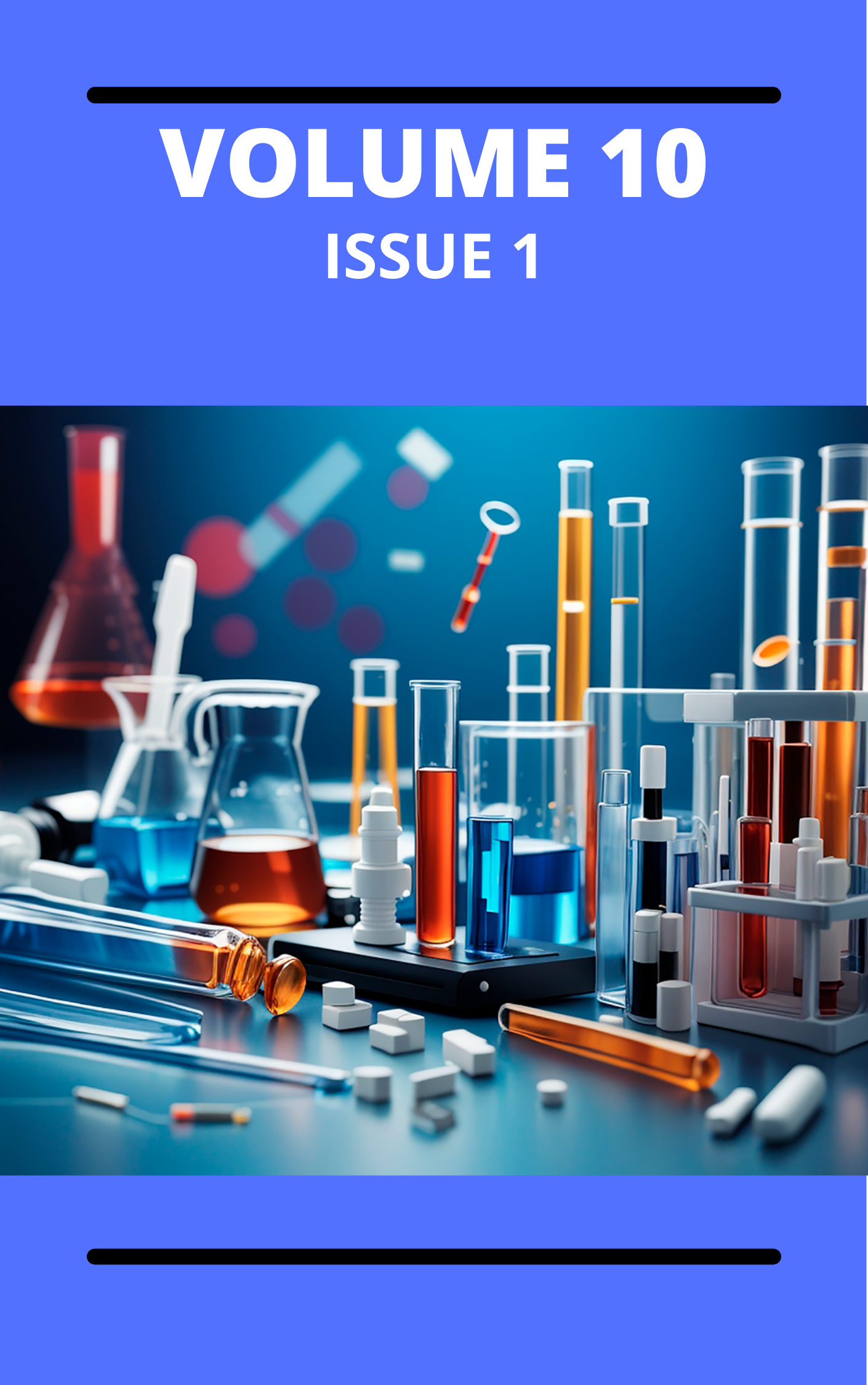The Investigation of the Corrosion Inhibition Efficiency of Aqueous extract of Vernomia Amygdalina for Mild Steel In Various Concentrations of HCl
Keywords:
Remediation, environmental consequences, corrosion, mild steel, inhibition, Vernomia amygdalonaAbstract
The corrosion inhibition potential of Vernomia amygdalona (VA) was investigated using different concentrations of aqueous extract of VA leaves (20 to 140 ppm), which was extracted by the cold process. Gravimetric analysis was carried out to investigate the effect of acid strength (0.4 to 2.0 M HCl), extract concentration and time on the inhibition efficiency of the VA extract. The results obtained showed a higher tendency for the inhibition efficiency to increase with the concentration of the extract but decrease with an increase in the period of contact. Adsorption isotherm fitness based on the Langmuir, Freundlich and Temkin models showed strong correlation coefficients. Physical adsorption. The evaluated values of the free energy of adsorption were below -20 kJ/mol and therefore supported the mechanism of physical adsorption.
Downloads
Published
Issue
Section
Most read articles by the same author(s)
- Richard Alexis Ukpe, Synthesis and Characterization of Calcium Oxide Nanoparticles (CaO-NPs) from Waste Oyster Shells , Communication In Physical Sciences: Vol. 10 No. 3 (2023): VOLUME 10 ISSUE 3 (2023-2024)
- Richard Alexis Ukpe, Exploration of Orange Peel Waste as Precursor for the Synthesis and Characterization of highly Crystalline and Mesoporous Silicon Oxide Nanoparticles , Communication In Physical Sciences: Vol. 11 No. 2 (2024): VOLUME 11 ISSUE 2
- Richard Alexis Ukpe, Joint Effect of Ethanol Extract of Orange Peel and halides on the Inhibition of the Corrosion of Aluminum in 0.1 M HCl: An approach to Resource Recovery , Communication In Physical Sciences: Vol. 4 No. 1 (2019): VOLUME 4 ISSUE 1
- Richard Alexis Ukpe, Joint effect of halides and Ethanol Extract of Sorghum on the Inhibition of the Corrosion of Aluminum in HCl , Communication In Physical Sciences: Vol. 4 No. 2 (2019): VOLUME 4 ISSUE 2
Similar Articles
- Okoche Kelvin Amadi, Onyinyechi Uloma Akoh, Godson Chukwudi Eric, Adsorption Studies on the Inhibitive Properties of Aqueous Extracts of Theobroma cacao (TC) Leaves on Mild Steel in 1.0 M HCl , Communication In Physical Sciences: Vol. 9 No. 3 (2023): VOLUME 9 ISSUE 3
- Okoche Kelvin Amadi, Stella Mbanyeaku Ufearoh, Innocent Ajah Okoro, Paulina Adaeze Ibezim, Mitigation of the Corrosion of Mild Steel in Acidic Solutions Using An Aqueous Extract of Calopogonium muconoide (cm) as a green corrosion inhibitor , Communication In Physical Sciences: Vol. 8 No. 3 (2022): VOLUME 8 ISSUE 3
- F. E. Awe, Adsorptive studies of the inhibitive properties of ethanolic extracts of Parinari polyandra on Mild steel in acidic media , Communication In Physical Sciences: Vol. 4 No. 1 (2019): VOLUME 4 ISSUE 1
- P. O. Ameh, N. O. Eddy, Theoretical and Experimental Investigations of the Corrosion Inhibition Action of Piliostigma Thonningii Extract on Mild Steel in Acidic Medium , Communication In Physical Sciences: Vol. 3 No. 1 (2018): VOLUME 3 ISSUE 1
- Monica Chikodinaka Nkwocha, Lebe A. Nnanna, Chukwuemeka Young Ahamefula, Ogwo D. Kalu, Properties of Avocado (Persea Americana) Leaf Extract as a Corrosion Inhibitor for Mild Steel in 1 M KOH , Communication In Physical Sciences: Vol. 12 No. 7 (2025): Volume 12 issue 7
- S. Chitra, Adsorption studies on the inhibition of the corrosion of mild steel in 2 M NaCl by tetracycline and neomycin trisulphate drugs , Communication In Physical Sciences: Vol. 5 No. 1 (2020): VOLUME 5 ISSUE 1
- S. A. Odoemelam, Inhibition of Corrosion of Mild Steel in Hydrochloric Acid Solution by two Schiff Bases Derived from Benheric and Linoleic Acids , Communication In Physical Sciences: Vol. 4 No. 2 (2019): VOLUME 4 ISSUE 2
- Richard Alexis Ukpe, Joint Effect of Ethanol Extract of Orange Peel and halides on the Inhibition of the Corrosion of Aluminum in 0.1 M HCl: An approach to Resource Recovery , Communication In Physical Sciences: Vol. 4 No. 1 (2019): VOLUME 4 ISSUE 1
- Ugoetan Victor Agbogo, Rifore Belief Silas, Victor Inioluwa Olaoye, Philip Ifeanyi Jerome, Mathew Joshua, Investigation of the Inhibitive Properties of Bio-Inspired Starch-Polyvinyl Acetate Graft Copolymer (Ps-Pvagc) on the Acid Corrosion of Mild Steel , Communication In Physical Sciences: Vol. 10 No. 2 (2023): VOLUME 10 ISSUE 2
- Iniofon Udom, Grace Cookery, Paul Ocheje Ameh, Investigation of Acanthus montanus Leaves Extract as Corrosion Inhibitor for Copper in 2 M Sulphuric Acid , Communication In Physical Sciences: Vol. 12 No. 3 (2025): VOLUME 12 ISSUE 3
You may also start an advanced similarity search for this article.




